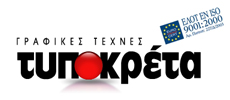Prefectures of Crete
Chania Prefecture
Municipality of ChaniaMunicipality of ApokoronasMunicipality of PlataniasMunicipality of KissamosMunicipality of Kandanos - SelinosMunicipality of GavdosMunicipality of Sfakia
Rethymnon Prefecture
Municipality of RethymnonMunicipality of MylopotamosMunicipality of AmariMunicipality of Agios VasiliosMunicipality of Anogia
Heraklion Prefecture
Municipality of HeraklionMunicipality of MaleviziMunicipality of Archanon - AsterousionMunicipality of FestosMunicipality of GortynaMunicipality of ChersonissosMunicipality of Minoa PediadosMunicipality of Viannos
Lassithi Prefecture
Municipality of MirampeloMunicipality of SitiaMunicipality of IerapetraMunicipality of Oropedio
Historical Information About Cretan Products
Historical information for the Cretan products
The coins that have been found in Crete from the first Byzantine period, serve as witnesses to the flourishing society Crete was during those times. In Kissamos which was the port of Polyrrhenia, as well as in Kydonia, both of which are situated on the west part of the island, coins from Constantinople, Thessaloniki, Nikomedia, Sirmio and Rome have been found. Fewer coins have been found at the rest of the island but they serve as strong indications of the important role these cities were playing as commerce centres.
Not much information is available concerning the agricultural and animal-breeding activities of that period. The fact that Crete has large fertile areas, suggests that such activities were very common. In addition, archaeologists have uncovered glass production facilities in the ancient town of Tarra in the south. The material used for the glass was imported.
In any case, agriculture and animal-breeding have always been the main occupations of the island's inhabitants. In the "Life of Saint Nicolas the Stoudite", Kydonia (in the western Crete) is described as a particularly rich in agricultural products (wheat, wine, fruit) area with abundant fresh water. Later on, the Arabs expressed their admiration for the agricultural riches of the island. Abu Hafs (a renown pirate that occupied Crete in 824 A.C.), described Crete as "the land where honey and milk flows".
Despite the lack of specific information about production during the Byzantine period, the Venetians have left us very detailed information concerning the island's production during the Venetian era.
Husbandry, like nowadays, must have been flourishing during that period. Already, since the 9th century Edrisi is naming Kydonia (modern Chania), then a small insignificant town, as Rhbldh - el - Djobn, that is the town of cheese. Cretan cheese was famous and was mainly consumed by the nobility of Constantinople. Along with the cheese products of Paflagonia, Cretan cheese was considered a delicacy by the rich bourgeoisie and the high-priests of Constantinople. It was mainly imported by the Venetian merchants of the city.
During the Venetian period, Crete was an important breeding ground for sheep, goats as well as cattle. This is indicated by a Latin document presented by the people of Crete to Venice, complaining for the extended losses of animals they suffered during the invasion of the island. As it is mentioned in the document, before the Venetian invasion there were cities with 50 to 200 thousand cattle and other animals. Similar is the description that Chr. Buondelmonti is giving while describing the south west Crete. Buondelmonti refers to large herds of cattle raised by the locals.
From the information surviving after the 9th century A.C., one can conclude that Crete was also self-sufficient when it came to cereals.
During the 11th and 12th centuries the production of wheat in Crete must had been quite substantial. This is supported by the fact that the emperor Alexios A' Komninos had given the right to the monks of the Saint John monastery in the island of Patmos to take 2.500 kg of Cretan wheat every year. Alexios' heirs, Ioannis and Manouil, increased this quantity to 8.960 kg per year while they also gave the right to the monks to take 48 golden coins per year. Crete's self-sufficiency in wheat production continued throughout the Venetian years, during which important quantities were exported from the island.
Apart from cereals, Crete was an important vine and wine producer as well. Cretan wine was known before the roman times; therefore, despite the lack of specific information before the 9th century, it is evident that wine production continued throughout the first millennium A.C. The quality of the Cretan wine was greatly appreciated in Constantinople and was mainly consumed by the higher strata of society.
As before, the most comprehensive and detailed information comes from the Venetian period. The Venetians encouraged the vineyard cultivation, as the wine exports and taxes on wine consumption were leaving them with huge profits. Cretan wine was exported as far as Flanders and Britain. As an example, in 1274, a notary called P. Scardon, recorded transactions of 181.000 liters of Cretan wine; which is a substantial quantity if one takes into account the fact that this is only a fraction of the quantities exported.
As opposed to wine, olive oil production was much more limited compared to the present day levels we see. Some sources actually note that olive trees were almost unknown to Crete. In the 12th century A.C., Al - Zuhri notes that Crete was importing olive oil and olives from Libya and Spain. However, this might not be the case as olive presses dating back to the late pre-historic period have been found. However, the olive oil production must have been limited and that is why Crete relied heavily on imports to satisfy its needs. Only during the Venetian period did the state encourage the cultivation of olive trees. Besides that, Crete was producing and exporting important quantities of essential oils and medicinal plants.
Apiculture and fishing were two other important activities, references of which are found in various sources. Cretan honey was famous and could be found in many places already during the roman times, while also Arabs were trading it during their occupation of the island. Other supplementary economic activities of Cretans were logging and the extraction of metals.
Metal and mineral extraction was known since the roman times; while sources from the Byzantine period show that these activities continued long after the 5thcentury A.C. The most commonly found metals were copper and lead but also limited quantities of gold and silver. Some of the most important mines were found in western Crete in Kantanos (copper), Kydonia (gold) and Sklavopoula of Selino (copper and iron).
Another important mine was found in Argyroupolis, where, as the name shows (argyros (silver) + polis (city silver was extracted. Besides, Venetians founded amint close to the silver deposits area. A bit to the west of Argyroupolis, in an area that used to be called Hrysoupolis (hrysos = gold) one can still find limited deposits of copper and silver.
Crete, especially its western part, used to be covered with dense forests of cypress. Thus, logging was an important economic activity for the locals. Big part of the production was exported towards Venice. Buondelmonti extensively describes the cypress forests of Sfakia and the way the loggers were transporting the tree-trunks to the sea taking advantage of the flow of the rivers.
In summary, these seem to be the most important economic activities of Crete's inhabitants during the Byzantine and Venetian period. As in the rest of the medieval world, important urban centers were in decline and the economy evolved around the development and utilization of the resources the countryside had to offer, as an attempt to achieve self-sufficiency.



 ENGLISH
ENGLISH







